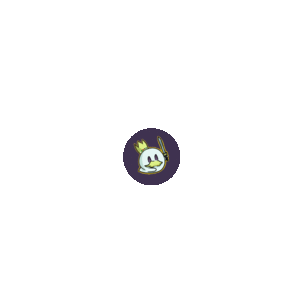Last week, Pauper underwent one of the most considerable changes in the format's history since the fateful Blue Monday: Kuldotha Rebirth, Deadly Dispute and Basking Broodscale — three pillars of the format's Metagame — were banned to increase diversity and slow down the games.
Leagues were Magic Online's first testing grounds and should remain that way for the next few weeks, while players explore opportunities and possible readaptations of old and new competitors to the new scenario.
In Challenges, on the other hand, we can see the first competitive results of the tournaments, which decks stood out and how the format's Metagame is beginning to take shape inside and outside Magic Online. In this article, we present the main highlights of the first week of Pauper Challenges, with analyses of how each of the main decks may behave in the coming weeks.
The First Post-Ban Pauper Challenges
In total, there were three tournaments between April 4th and 6th, and as expected after very abrupt changes that altered the status quo, the first week of Challenges brought a more diverse Metagame, especially because many different decks were tested.
In aggregate, the three Challenges had the following archetypes on their Top 32:
Ad
Ad
Ad
Ad
Ad
| Quantity | Deck Name |
|---|---|
| 11 | Gruul Ramp |
| 10 | Mono Blue Terror |
| 7 | Grixis Affinity |
| 6 | Bogles |
| 6 | Synthesizer Burn |
| 6 | Walls Combo |
| 5 | Madness Burn |
| 4 | Mono-Blue Faeries |
| 4 | Dimir Faeries |
| 4 | Ephemerate Tron |
| 4 | Jeskai Ephemerate |
| 3 | Jund Wildfire |
| 3 | High Tide Storm |
| 2 | Elves |
| 2 | Mono Red Dredge |
| 2 | Boros Synthesizer |
| 2 | Black Gardens |
| 2 | Family |
| 2 | Goblins Combo |
| 1 | Goblins Aggro |
| 1 | Dimir Terror |
| 1 | Golgari Dredge |
| 1 | Mardu Synthesizer |
| 1 | Turbo Fog |
| 1 | Cycling Storm |
| 1 | Flicker High Tide |
| 1 | Inside Out |
The first impression of these numbers is that they are “as expected”. Blue Terror and Gruul Ramp were the two top archetypes of the Metagame least affected by the bans, so it stands to reason that they are the most reliable pick for the current format.
The same result was expected for Bogles, Elves and Walls Combo in the first week: a less interactive environment where players are experimenting a lot opens space for this archetype category, and even Madness Burm and Synthesizer Burn, a new version of Mono Red, were also very present for the same reason — especially when players stopped respecting red Aggro so much to the point of reducing the amount of Hydroblast.
Gruul Ramp
Despite the numbers, Gruul Ramp did not have much presence in the Top 8's. In general, the lists have been leaning more towards the Ponza mana disruption side, and I'm not sure if that's the path the deck needs to be on as the format rebuilds — if mana-hungry archetypes grow, this setup gains a purpose, but what we've seen in the first week is the addition of archetypes trying to cast spells at the lowest possible cost.
But we can't deny how efficient this deck is at what it does: Writhing Chrysalis is still the best creature in the format, and the amount of two-for-ones that each consecutive drop of it can generate bury any fairer Midrange in card advantage, but it has a huge problem dealing with Mono Blue Terror or even Faeries if it can set up Tempo plays on the right cards.
Ad
Mono Blue Terror
Mono Blue Terror seems to be the deck to beat in the first few weeks of the “new Pauper”. It has consistently performed in the Top 8 of Challenges, had the second-highest share in the Top 32, and is not affected by any bans that occurred last week.
As a bonus, Pauper is slower and Mono Blue Terror was born out of the need to deal with and keep up with a Metagame where failing to be proactive and/or interact for a turn meant a potential defeat — without Broodscale Combo and Kuldotha Red, the way for a good Mono Blue player to pressure the opponent early and delaying the opponent's Tempo as efficiently as possible is much easier.
Some lists have included High Tide to expand the explosive potential of cards like Tolarian Terror and Murmuring Mystic. Its inclusion today feels like win more — something the archetype doesn't need to be better than it is today, and High Tide is best used combo-wise rather than trying to make a fair game.
Grixis Affinity
Ad
Without Deadly Dispute and the pressure exerted on mana efficiency by Tolarian Terror, Affinity had to readapt to having blue as a mere splash, giving up Kenku Artificer to adopt a 
Hunter’s Blowgun became a permanent card in Affinity also due to its interactions with Krark-Clan Shaman, and although the archetype remained efficient and with good conversion in the Top 8 this weekend, it felt the loss of its main source of card advantage.
Bogles
Bogles is an archetype that, like most aggressive or non-interactive archetypes, benefits from a changing Metagame.
With many decks in testing and no sideboard hate directed at it, coupled with the ingenious choice of including Dispel in the maindeck in anticipation that Counterspell and the like will be its biggest enemies, it was a good week for it, and it remains to be seen whether it will continue to be on top as the format stabilizes.
Ad
Synthesizer Burn
With the banning of Kuldotha Rebirth, the core of Goblin Tomb Raider, Voldaren Epicure and Experimental Synthesizer needed a new way to pressure the opponent without relying on the permanent power of Rebirth's interaction with Goblin Bushwhacker, and the choice was to go back to the origins and include a Burn package with Kessig Flamebreather and Thermo-Alchemist.
The idea, in this case, is to pressure the opponent with the early-game beatdown using Goblin Tomb Raider and Clockwork Percussionist, and complement it in the following turns with Kessig Flamebreather and damage spells, in addition to Wrenn’s Resolve to ensure more gas as the game goes on.
I’ve been testing this list for the last few days (you can expect a guide soon), and although it’s more successful in terms of numbers and results, I feel that Synthesizer Burn tries to do too many things and ends up not doing them very well. More targeted versions can achieve results that are just as efficient or better.
Mono Red Goblins
This version relies on the go wide of Burning-Tree Emissary with cheap creatures to try to “simulate” a Kuldotha Rebirth, taking advantage of the board presence to get the most out of Goblin Bushwhacker.
Ad
A more Goblin-oriented list also guarantees Goblin Grenade as a powerful damage spell, which can benefit from cards like Mogg War Marshal. Allowing the beatdown plan to have more reach.
Just like Synthesizer Burn, I don't know if this is the ideal version for Red Aggro post-bans, but its game plan is clearly more targeted than the variant above.
Mono Red Dredge
Another new addition this week was a Dredge variant that won two spots in the Top 8 of one of the events, giving up the self-mill effects of Golgari in favor of several Looting effects with creatures like Insolent Neonate and Scrapwork Mutt to discard Sneaky Snacker and return it to play.
The ideal plan, in this case, is also to always discard Stinkweed Imp and use the Dredge instances for each time you activate a draw ability, putting as many creatures as possible in the graveyard and then using the creatures in play and/or Sneaky Snacker to cast Dread Return and return Lotleth Troll to the battlefield, winning the game.
High Tide
Ad
The potentially most dangerous card on the unbanned list, High Tide has made a few appearances, but only one version made it into the Top 8 over the weekend: the one that most closely resembles Storm and tries to generate absurd amounts of mana to win with Stream of Thought.
To untap lands consistently, the list runs Arcane cards with Psychic Puppetry to add the effect of untapping a permanent to them in addition to their primary ability. Combined with High Tide and recursion tools like Flood of Recollection, it is possible to start generating positive mana consistently after the third cast.
The finisher involves generating enough mana to mill the opponent with Stream of Thought. This can be done by reusing your spells to untap whenever possible and sequencing Stream of Thought with Flood of Recollection to return cards that matter, or when you get to the point where High Tide generates seven mana — enough for Petals of Insight with Psychic Puppetry to generate positive mana. From that point on, it has infinite mana.
This is a very complicated deck to play, especially on a click-intensive platform like Magic Online. It's not yet clear if this will be the best version of High Tide, but it's clearly the one that best utilizes the unbanned card's main advantage.
Wrapping Up
The first week of a format that has been revamped by interventions is always a bit unstable. We could see some archetypes gaining prominence despite the bans, and others that were already established that only grew more without the other competitors that left the format.
Based on the results, the ideal plan today is to be ready for four archetypes: Blue Terror/Faeries, Gruul Ramp, Affinity, and red variants that will continue to emerge despite the bans. Decks like Elves, Bogles, and Walls are also worth respecting, but they require more specific interactions and may be overtaken by other archetypes next week.
Ad
High Tide is another strategy that demands respect. But unlike Storm's smooth runs, it feels a bit too slow and easy to interact when compared to its spiritual predecessors, but as players get better at the archetype and find new ways to build their lists, it could become a major contender in the Metagame.
Thanks for reading!










— Comentarios0
Anselm Hinckel • 08/04/25
Raphael MartineMOD • 09/04/25
Soyez le premier à commenter